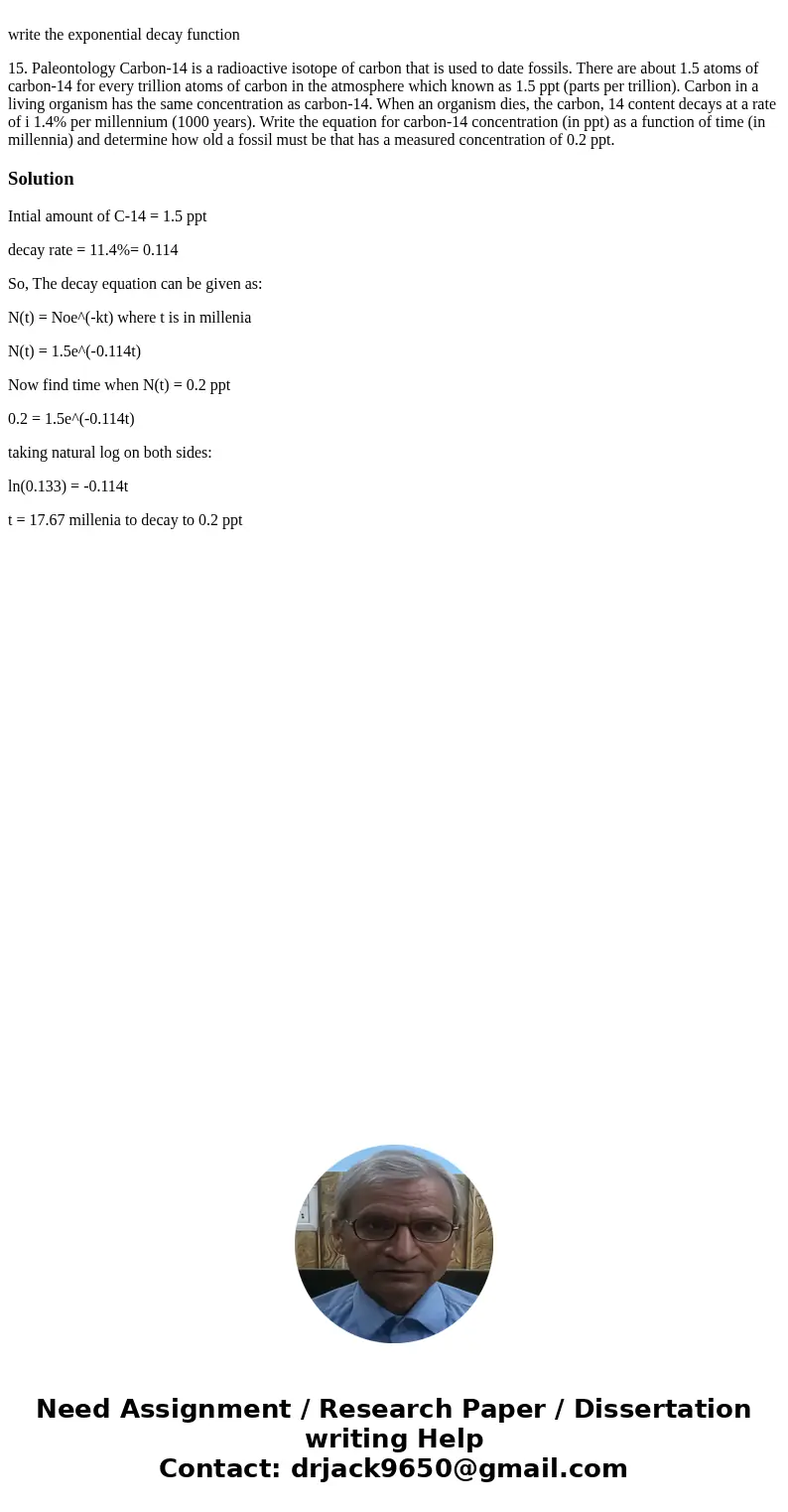write the exponential decay function
15. Paleontology Carbon-14 is a radioactive isotope of carbon that is used to date fossils. There are about 1.5 atoms of carbon-14 for every trillion atoms of carbon in the atmosphere which known as 1.5 ppt (parts per trillion). Carbon in a living organism has the same concentration as carbon-14. When an organism dies, the carbon, 14 content decays at a rate of i 1.4% per millennium (1000 years). Write the equation for carbon-14 concentration (in ppt) as a function of time (in millennia) and determine how old a fossil must be that has a measured concentration of 0.2 ppt.
Intial amount of C-14 = 1.5 ppt
decay rate = 11.4%= 0.114
So, The decay equation can be given as:
N(t) = Noe^(-kt) where t is in millenia
N(t) = 1.5e^(-0.114t)
Now find time when N(t) = 0.2 ppt
0.2 = 1.5e^(-0.114t)
taking natural log on both sides:
ln(0.133) = -0.114t
t = 17.67 millenia to decay to 0.2 ppt

 Homework Sourse
Homework Sourse